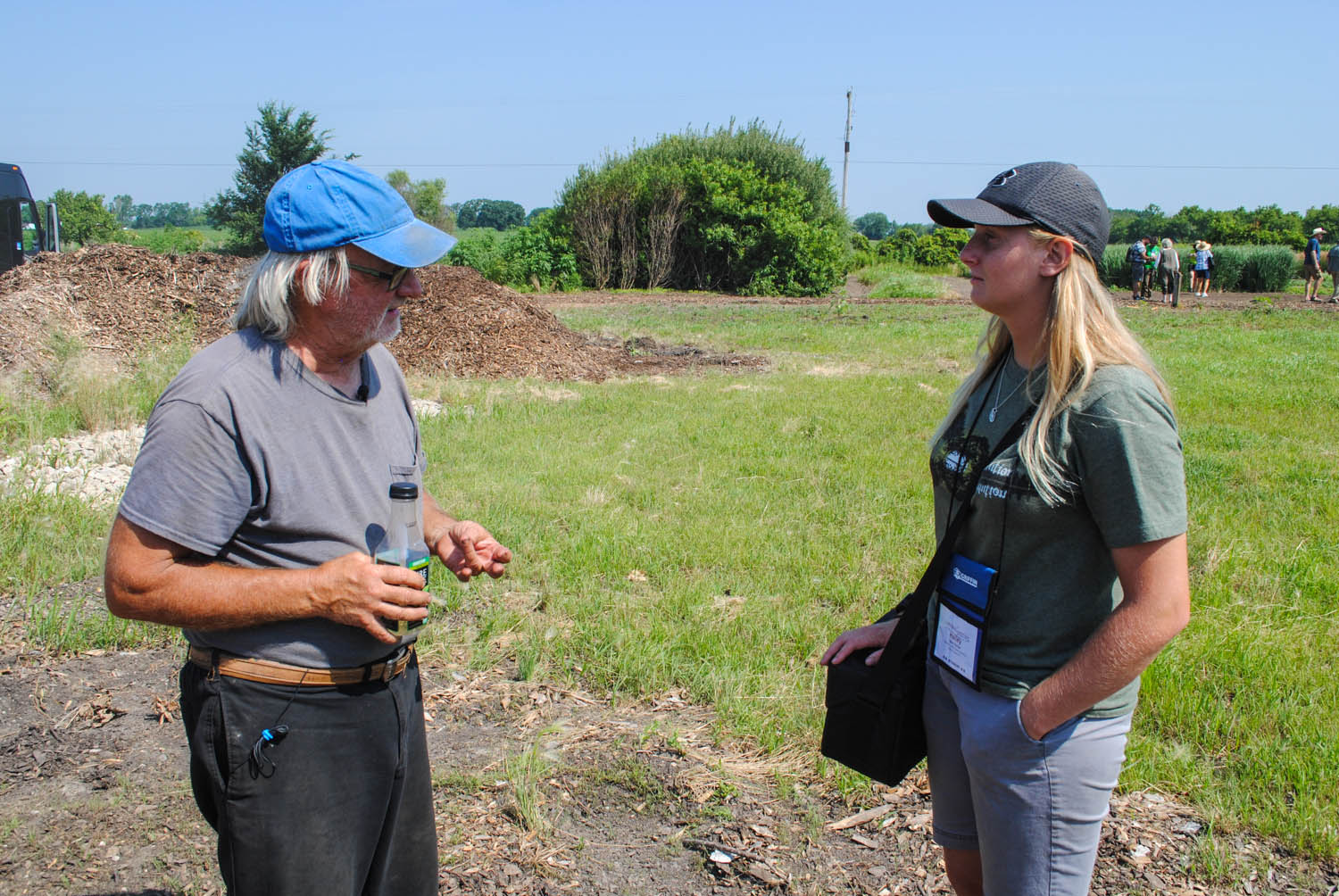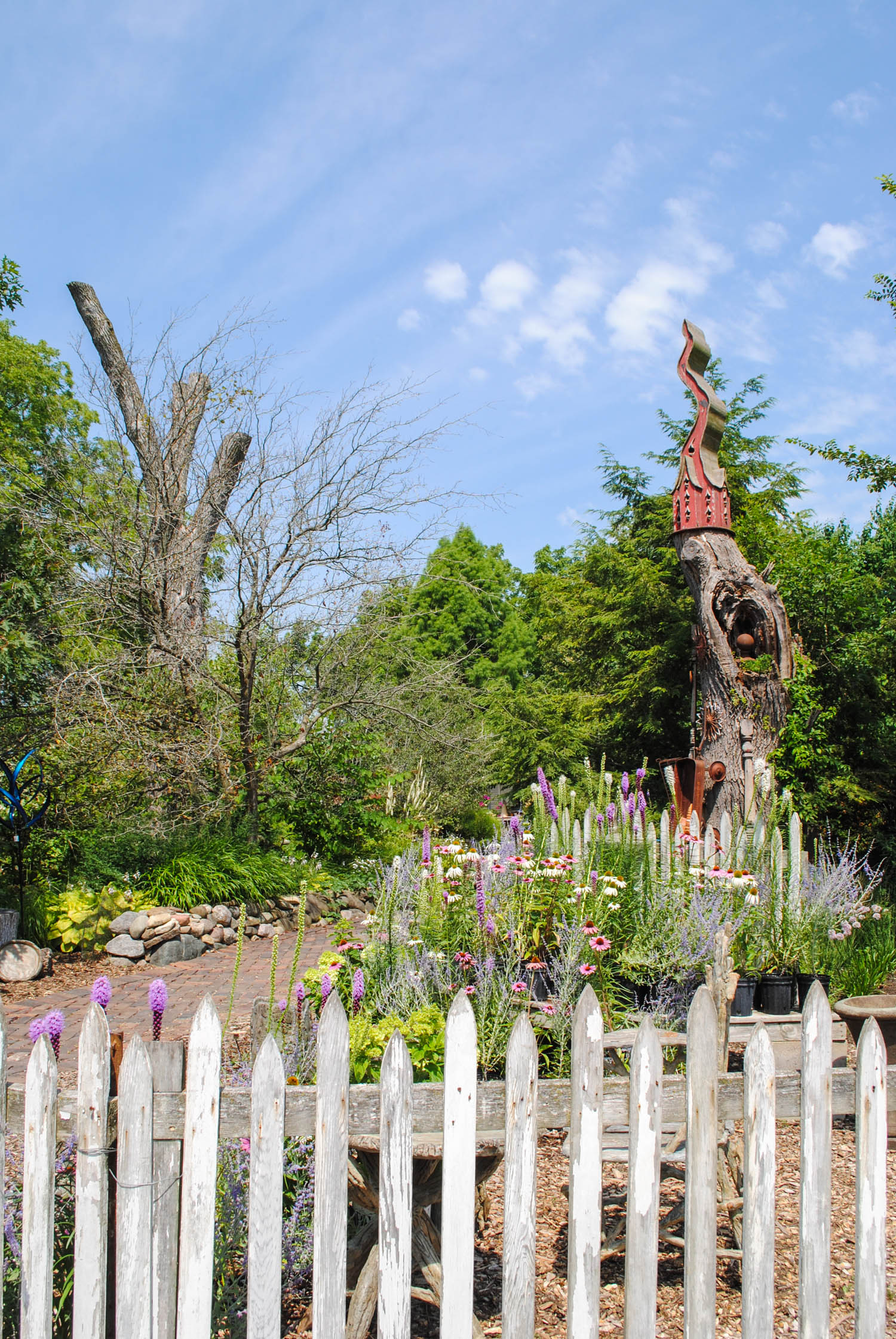Northwind. The name is so evocative. It sounds like something moving somewhere. And with direction.
That observation not only matches the name of the farm, but also one of the people who tends Northwind—Roy Diblik. For as long as I’ve known Roy and heard about him he’s been transforming the world of horticulture with his “know maintenance” philosophy of perennials, a play on words from the typical “no maintenance” dogma that has become a tagline of plants everywhere. But, Roy’s approach for perennials is an extension of a deeper love for people, plants, and the world. Anyone who listens to his kind voice can see why some people give him the nickname Uncle Roy.
The truth of “know maintenance” instead of the fallacy of “no maintenance”, a belief imbued in the plantings at Northwind.
Northwind Perennial Farm was a place that I’ve wanted to see for years because of Roy’s handiwork. I was delighted to finally visit with the recent Perennial Plant Association’s symposium in Chicago. Right off the bus, Roy shared insights with us about the property. I’ll paraphrase from my scribbling.
He said that the past three years were very wet, and he had seen that shift in his plant communities. It’s good to have plantings that can adapt!
His approach is to plant a matrix of plants to reduce the competitiveness of bully plants; he then puts the aggressive competitors in later (an approach that I’m trying this year in my fledgling prairie).
He said that we are in one of the most transformational times in horticulture because there are more plants available now in commerce than ever and that we are becoming a plant-driven culture. What we have to figure out is how can we put plants together in a way so they can live.
He also shared how Piet Oudolf had given him advice on his plantings. Piet told Roy to stretch out his plantings because they were too choppy.
He told us that his perennial plantings are now competitive with vinca and pachysandra from a homeowner standpoint and that customers actually want to have these plantings instead of the monoculture groundcovers. He left us with wise words, “Know your plants,” with the promise that if we do, we can do wonderful things in the landscape.
Roy Diblik greets Perennial Plant Association members.
Roy Diblik shares some advice with Hailey Dunbar, Stephen F. Austin State University horticulture student and a Perennial Plant Association scholarship winner.
We were encouraged to go mingle. I don’t think I realized before going how retail-oriented Northwind was. The barn front and center on the property really helped to frame the experience and create a sense of place, and walking inside I realized that it had been flipped to make an incredible garden center full of rustic trinkets. An awning off the barn covered a seating area where visitors could also see the events for the season on a chalkboard.
A lovely shot of the plantings around the barn.
Oh my! Jared Barnes has barn envy…
I mean look at the inside of this place. Wow, how I wish I had this barn in my backyard.
This cute little sitting area was just outside the barn. Notice how the chalkboard features many events for the coming year.
Outside of the barn was the plant-filled nursery where people and chickens were allowed to roam free. I particularly loved Roy’s displays where he helped teach people what plants went well together and when they’d be in season with examples of design.
A flock of chickens being stalked by paparazzi.
Good signage was effectively used at Northwind Perennial Farm. Also, notice how clean and weed free the ground is.
This bench features plants that grow well together. The signage helps customers understand how and when to plant them.
A close up of one of the inspiration signs at Northwind. INTIMACY IS GOOD!
I almost walked past this bench, but the bubbling water feature in the middle-right of this image caught my ear. I thought it such a clever idea to help engage customers’ senses.
And, scattered throughout Northwind were elements that added to the agrarian spirit. An elevated patio. Stained glass windows hanging along a path. A pyramid of stone. Even an old wagon hanging on a tree holding terra cotta pots. Old snags also stood around. I didn’t ask Roy, but I assumed that these dead trees were for the birds and the critters to have life.
You think I can get this patio on the bus?
Now I have to start looking for stained-glass windows for my garden.
When it said Northwind Perennial FARM, I never dreamed there’d be animals here, too!
Whimsy scattered about Northwind Perennial Farm. I love this old wagon on the green.
This boulder pyramid creates an enigmatic focal point. Where did it come from?
Snags were left around Northwind Perennial Farm. I assume for the creatures that wander about.
I was impressed by the display gardens. Lollipop Allium looked scrumptous against the verdant green matrix. Hemerocallis and Hypericum echoed colors together. And, there was rich color scattered to and fro amongst a groundcover of green.
A sea of delectable-looking Alliums hover by a bench.
A nice color echo between Hypericum and what was identified as ‘El Desperado’ Hemerocallis.
Ornamental grass en masse
A vivid example of Roy’s approach to planting perennials. Color erupts from the green matrix below.
This part of the garden featured a dry creek bed.
Brent Heath helped me identify this geophyte as Allium flavum.
Note the repetition of the Kalimeris in this planting to create a sense of harmony.
A low and wild planting at Northwind Perennial Farm.
Before leaving, I overheard a conversation about ‘Northwind’ Panicum. Roy shared the story with us that he discovered ‘Northwind’ while collecting seed along a railroad track near South Elgin, Illinois. Its upright habit is welcomed as many Panicum struggle with flopping. I walked over to a big block of them, and snapped a few photos and thought of all the times I had encountered this plant in landscapes across America.
‘Northwind’ Panicum virgatum standing rigid. It’s know for its ability to stand upright.
Visiting Northwind was a real treat. The one thing that I take away each time from visiting with Roy is a feeling of genuine care for people and plants. He is a disciple of love who enriches communities of people with communities of plants. It’s a reminder of how we can all live in harmony on this earth. As long as we’re not too thuggish!
Please be a litter bit thoughtful and start doing more naturalistic plantings!




























